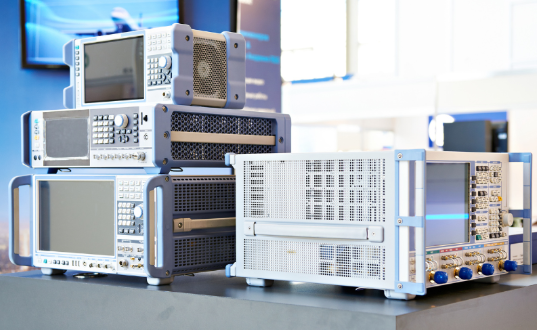Accurate signal analysis is crucial in electronics, telecommunications, and digital testing. Engineers rely on network analysers and spectrum analysers for specific applications. Although these instruments analyse signals, their functionality and use cases differ significantly.
Understanding Network Analysers
Network analysers assess how signals behave within a system, providing critical insights into transmission and reflection characteristics. Engineers use them to evaluate impedance, phase, and frequency responses, making them essential for verifying high-frequency circuit performance.
Primary Functions
Network analysers measure scattering parameters (S-parameters), helping identify signal losses, impedance mismatches, and phase shifts. They are particularly useful in RF and microwave applications. Unlike spectrum analysers, which capture signals, these instruments actively generate test signals and evaluate responses. This capability makes them ideal for characterising high-frequency circuits and components such as antennas and amplifiers.
Applications
Engineers rely on network analysers when developing and testing RF components. These instruments help in verifying impedance characteristics in DDR memory test setups, ensuring signal integrity across memory interfaces. Network analysers also support protocol analyser configurations by diagnosing transmission inconsistencies in high-speed communication systems.
Key Features
- Measures S-parameters to evaluate transmission and reflection
- Operates across broad frequency ranges
- Provides time-domain and frequency-domain analysis
- Ensures accurate impedance matching for RF circuit design
Understanding Spectrum Analysers
Spectrum analysers capture and visualise signal power over a frequency range, allowing engineers to detect and analyse different frequency components. These instruments assist in evaluating interference, harmonics, and spurious emissions.
Primary Functions
Spectrum analysers identify signal distortions and unwanted frequency components. They display amplitude variations over frequency, making them valuable in assessing electromagnetic interference (EMI) and modulated signals. Unlike network analysers, they do not actively generate test signals. Instead, they passively monitor and measure existing signals.
Applications
Telecommunications, audio engineering, and broadcasting rely on spectrum analysers to evaluate signal purity and interference levels. Engineers also integrate spectrum analysers into digitiser systems for real-time signal acquisition and analysis. These analysers help validate protocol analyser performance by detecting unexpected signal deviations in communication networks.
Key Features
- Captures frequency spectrum in real-time
- Evaluate modulation quality and signal purity.
- Assesses interference and noise within communication systems
- Supports frequency domain measurements with high accuracy
Differences Between Network Analysers and Spectrum Analysers
Signal Generation vs. Passive Monitoring
Network analysers actively send test signals into circuits and measure responses, allowing precise characterisation of electronic components. Spectrum analysers do not generate test signals but instead detect and visualise existing signals. This fundamental difference defines their specific applications.
Measurement Focus
Network analysers measure S-parameters, evaluating transmission efficiency and impedance characteristics. Spectrum analysers measure frequency response and signal power, identifying signal purity and interference levels. Engineers use network analysers in RF circuit design, while spectrum analysers help in EMI troubleshooting and signal verification.
Frequency Domain vs. Time Domain Capabilities
Network analysers provide time-domain reflectometry (TDR) and frequency-domain measurements, enabling in-depth circuit analysis. Spectrum analysers, however, focus exclusively on frequency-domain measurements, displaying signal amplitude variations over frequency.
Application in Digital Testing
Network analysers ensure integrity in DDR memory test procedures by verifying signal reflections and losses. Spectrum analysers, on the other hand, assist in digital signal analysis by detecting spectral components in communication systems. Engineers integrate spectrum analysers with digitiser solutions to capture high-speed signals for further processing.
Choosing the Right Analyser for Your Needs
When to Use a Network Analyser
- Evaluating transmission and reflection in RF components
- Designing high-frequency circuits requiring impedance matching
- Conducting DDR memory test for signal validation
- Verifying protocol analyser functionality in high-speed communication setups
When to Use a Spectrum Analyser
- Measuring signal frequency, power, and purity
- Detecting EMI and signal interference
- Integrating with digitiser systems for real-time data analysis
- Evaluating protocol analyser efficiency in network diagnostics
Conclusion
Network analysers and spectrum analysers serve distinct functions in signal analysis. Engineers rely on network analysers for evaluating impedance and transmission properties, while spectrum analysers provide frequency-domain insights for signal purity assessment. Selecting the right instrument depends on the measurement requirements and the specific application.
Contact Gentron Corp for network analyser solutions in Singapore, ensuring precise signal testing and evaluation.

